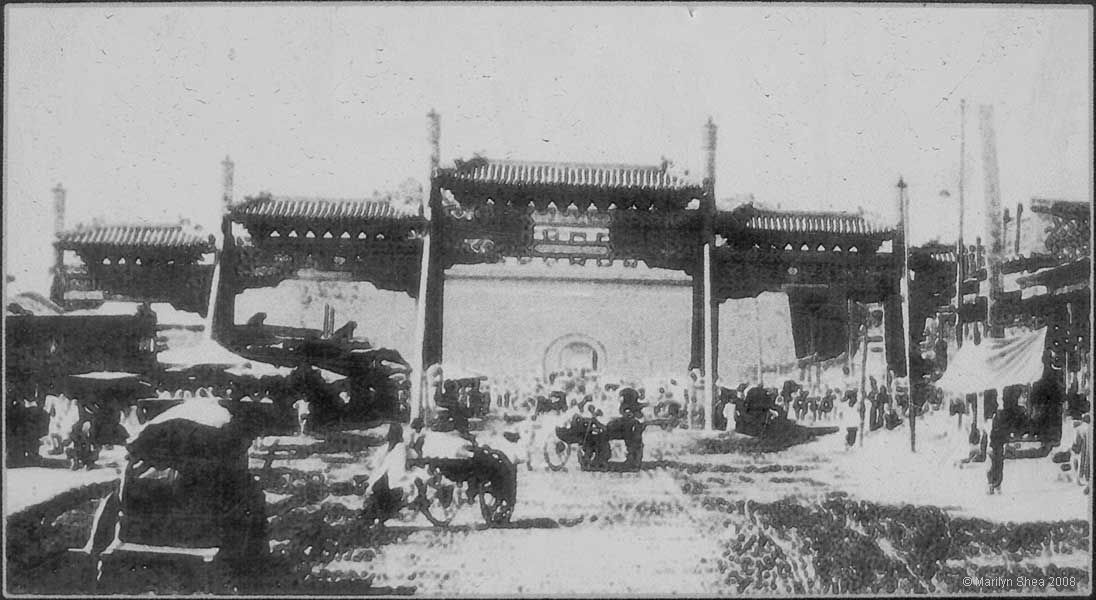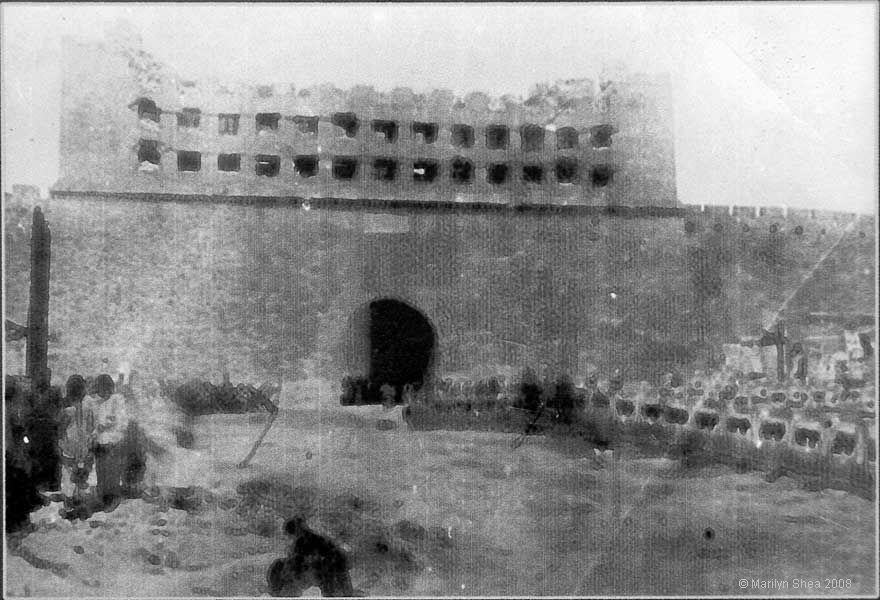 |
| In the late 1800s, China was beset by draught, famine, and a war with Japan. The war emptied the treasury and left the Chinese fleet in shambles. In the interior, despair resulted in a number of protest movements and riots. The one that gathered momentum in the late 1800s was that of the "Righteous Fists of Harmony,” Yihe tuan 义和团. In English, they are called the "Boxers". They were against landlords, Westerners, and Christians; anybody who had money and anything modern. The believed that things like telegraph lines and railroad tracks had poisoned the fields and displeased the gods. The movement began to sweep through all of the provinces of China in 1898. Christian missionaries, Western businessmen, and wealthy landowners were slaughtered.
The Qing Dynasty tried to quell and stop the movement in its early stages, but later sought to turn the power of the mob away from the government and toward foreigners. It is not an uncommon manipulation by a government. Politically, it made sense for a failing corrupt Qing government to divert attention from itself to others. The situation moved to another level when the Righteous Fists hit Beijing. They swept into the city and began burning and looting, not only Western properties, but anything that looked like a good target. In early June of 1900, the Boxers attacked the legation region in Beijing. The Legations were located to the right of the picture below, to the east of Tian'anmen Square. They were joined by government troops and supplied with heavier weapons. The Chinese declared war on the European powers on June 21, 1900. According to Seagrave (Dragon Lady, 1993), this was an internal power play within the Qing ministries to wrest control from one group of Manchu Lords by another. In any case, it was a mistake. Thousands of Chinese Christians had already been killed, but with the declaration of war and the sanction of the government many thousands more were slaughtered by certain local governors. The attack on foreign missionaries and their families became official in places like Shanxi, but in other Provinces, particularly in the south, the governors refused to follow the lead of Beijing and continued to fight the Boxers and give what protection they could to foreign civilians. This is actually another indication of the dissolution of the Qing Dynasty. They had lost the power to lead, the Mandate of Heaven. One of the great material disasters of this movement was the burning of the Hamlin library. The library contained unique treasures of Chinese history and literature. It had been the centerpiece of Chinese Classical education and scholarship dynasty. On June 23, 1900 the regular army joined the Boxers in the attack on the legations. One line of attack was on the British Legation which was near the library. By setting fire to the library, General Chanf Fu Xiang hoped to burn the British Legation. The British saved themselves and their buildings with a bucket brigade, but the library and remaining contents were utterly destroyed. On June 24, the attackers burnt the Empress' Carriage Park in a second attempt to burn the British Legation. They also switched from rifles to the use of a three inch gun to fire mortar shells. The attack on the legations continued daily. The legations answered fire with both rifles and canon. The siege lasted from June to August 14th, when the Eight Armies arrived from Tianjin. Bombardment took out the top of the Archery Tower. Usually you would see the tower rising above the wooden neighborhood gate. Below, you can see the remains of the Archery Gate without the tower. Zhengyangmen Tower 正阳门门楼, made of wood, burnt. The Europeans behaved just as badly as had the Boxers. The troops of several nations robbed and looted to their hearts' content. It is hard to judge from a distance of time. During the Taiping Rebellion, when the Taiping rebels captured Shanghai, they looted it and then when the government troops "freed" Shanghai, they did the same. The reparations demanded of the Chinese government were crushing, but at the same time the allies bolstered the Qing Dynasty which was on the brink of collapse. As had happened to each dynasty in the past, successive uprisings, riots, and rebellions finally ended when an organized group finally took power. This happened just a few years later, on October of 1911 in Wuchang. That was the beginning of the Chinese Revolution. |
 |
http://hua.umf.maine.edu/China/HistoricBeijing/Qianmen/index.html
Last
update: August 2009
© Marilyn Shea, 2009